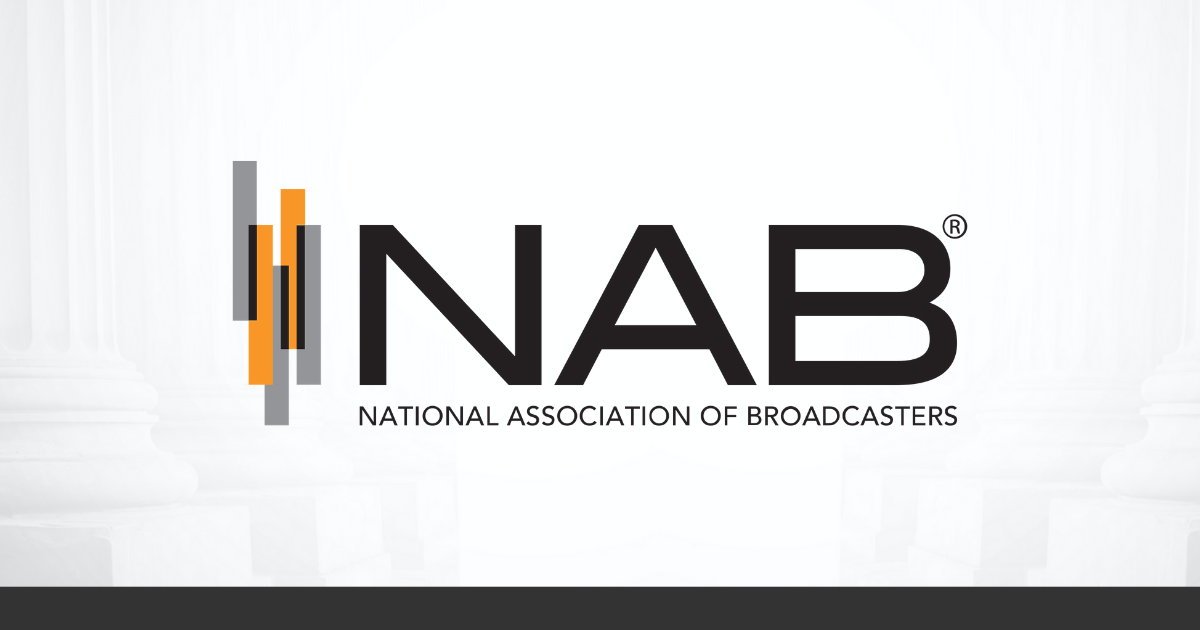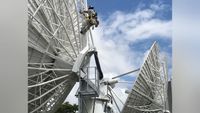Explore web search results related to this domain and discover relevant information.

In the world of satellite communications, C Band Frequencies play a crucial role in ensuring reliable, high-quality connections for broadcasting, VSAT, and data transmission. Whether you’re an engineer, network planner, or simply curious about how satellite uplinks and downlinks work, ...
In the world of satellite communications, C Band Frequencies play a crucial role in ensuring reliable, high-quality connections for broadcasting, VSAT, and data transmission. Whether you’re an engineer, network planner, or simply curious about how satellite uplinks and downlinks work, understanding the different C Band frequency ranges and their associated parameters is essential.Palapa Band refers to frequencies historically used by the Indonesian Palapa satellite network. Insat C Band is specific to the Indian National Satellite System (INSAT).Below, we’ll break down the most common C Band Frequencies, including their RF (Radio Frequency), IF (Intermediate Frequency), and Local Oscillator (LO) values.The C Band is a section of the electromagnetic spectrum ranging roughly from 4 GHz to 8 GHz. In satellite communications, the C Band typically covers uplink frequencies from about 5.85 GHz to 7.025 GHz.
C-band spectrum also known as mid-band spectrum, is the perfect balance between low and high bands offering a good compromise between coverage and high throughput for 5G cellular networks

The next-generation of wireless technology is now even faster for 5G users in some parts of the country.
Telecom companies have rolled out 5G networks to various locations across the United States over the last few years, delivering an experience that’s arguably only a notch above what 4G offers. But on Wednesday, Verizon (VZ) and AT&T (T) turned on their C-band 5G networks – an important set of radio frequencies that will supercharge the internet as we know it.If the term C-band sounds familiar, it’s likely because it’s been the subject of a weeks-long fight between wireless carriers AT&T and Verizon, the Federal Aviation Agency and some airlines. AT&T and Verizon announced this week that the companies would once more delay launching C-band 5G on some towers at various airports across the country.The decision came as airlines warned of dire consequences for transportation and the overall economy over concerns that the newly-activated C-band technology could interfere with the radar altimeters that pilots use to land in low visibility conditions.It’s considered the “global” frequency for 5G across the world – most global carriers deployed 5G in this frequency band as it offers more bandwidth, which equates to a higher system capacity at higher data speeds.
Like digital mixtapes, fans can ... up to create a playlist · Tune in weekly to hear new music and artist interviews.View all shows ... Soothsayers stop by to talk about their new album Fly Higher plus new music from Jalen Ngonda, Mulatu and El Michels Affair. Hosted by Aly Gillani. Illustration of Soothsayers by Paul Grelet. Explore the latest music releases, hand-selected by the Bandcamp editorial ...
Like digital mixtapes, fans can share the music they love from the artists they support.Sign up to create a playlist · Tune in weekly to hear new music and artist interviews.View all shows ... Soothsayers stop by to talk about their new album Fly Higher plus new music from Jalen Ngonda, Mulatu and El Michels Affair. Hosted by Aly Gillani. Illustration of Soothsayers by Paul Grelet. Explore the latest music releases, hand-selected by the Bandcamp editorial team.Discover amazing music and directly support the artists who make it.selling right now paused (and yes, this really is a live feed — I can’t believe you thought it was canned!) (and yes, this really is a live feed — when you hear “nobody pays for music anymore,” that’s just The Man spreading his agenda) pause unpause

What is C-Band, how can it benefit businesses and consumers, and what does it mean for the future of 5G? Learn more here.
C-Band spectrum stands to significantly expand the availability of higher-performance 5G connectivity around the country, providing fast speeds to more areas of the country than was previously possible. As C-Band continues to roll out, it should enable innovative business use cases across multiple sectors and deliver a faster internet experience to consumers.To answer these questions, it's necessary to first explain an important aspect of how 5G works. As most business leaders know by now, 5G is the fifth-generation technology cellular broadband network currently being rolled out in the United States. 5G uses three key spectrum ranges: low-band, mid-band and high-band.While the low-band spectrum offers maximum coverage, for example, its speeds are lower than the other bands. From a user experience perspective, low-band 5G speeds aren't appreciably faster than 4G LTE speeds.C-Band offers a transformative mix of performance and coverage, allowing it to offer significantly broader range and penetration than high-band spectrum–so it can be accessed from within buildings–while offering speeds significantly greater than low-band 5G.


Four major U.S. wireless carriers told the Federal Communications Commissions (FCC) late on Friday they had agreed to some voluntary actions to address aviation safety concerns and allow full use of the C-Band wireless spectrum for 5G use.
WASHINGTON, March 31 (Reuters) - Four major U.S. wireless carriers told the Federal Communications Commissions (FCC) late on Friday they had agreed to some voluntary actions to address aviation safety concerns and allow full use of the C-Band wireless spectrum for 5G use.The agreement follows extensive discussions with the Federal Aviation Administration (FAA) and is a major step forward, allowing carriers to increase power levels to get to full C-Band use, according to the letter and people involved in the talks.Last year, Verizon and AT&T voluntarily agreed to delay some C-Band 5G usage until July as air carriers worked to retrofit airplane altimeters.The FCC did not immediately comment. The FAA said Friday it continues "to work closely to ensure a safe co-existence in the U.S. 5G C-band environment."
For 5G to offer an experience that's noticeably better than 4G, it needs broad, dedicated channels, ideally 50MHz or wider. That's where C-band comes in—the frequency that might save 5G in the US.
After two years of AT&T's and Verizon's "nationwide 5G" networks feeling much like 4G, C-band could finally majorly multiply speeds. But what is C-band, and what does it mean for 5G? Do you need a C-band phone? Is C-band a new frequency? Should you be scared of C-band?There's another chunk of airwaves involved, too, from 3.45 to 3.55GHz. Nobody has really settled on what to call these—they're "3.45," "DoD" (the military used them), or even "Andromeda." But they have a lot in common with the C-band spectrum, so we include them in this explainer.The main C-band frequencies have been used for satellite TV since the 1970s, but because C-band satellite reception requires "big, ugly dishes" up to 10 feet in diameter, they largely got replaced by more flexible systems with smaller dishes on the Ku band, such as Dish and DirecTV.In the US, we will use n77, a larger band from 3.3 to 4.2GHz, in part so carriers can combine 3.45GHz, CBRS, and C-band for wider channels if they have the licenses available. Japan also already uses n77, so equipment and phones are out there. Mid-band, including C-band, is the world's most popular form of 5G.

C band may refer to: · C band (IEEE), a radio frequency band from 4 to 8 GHz · C band (infrared), an infrared band from 1530 to 1565 nm (roughly 200 THz) · C band (NATO), a radio frequency band from 500 MHz to 1 GHz · C-banding, in genetics · Category: · Disambiguation pages · Search ...
C band may refer to: C band (IEEE), a radio frequency band from 4 to 8 GHz · C band (infrared), an infrared band from 1530 to 1565 nm (roughly 200 THz) C band (NATO), a radio frequency band from 500 MHz to 1 GHz · C-banding, in genetics · Category: Disambiguation pages ·
In the C-band, a CR GSO satellite downlink (3.4-3.8 GHz) (scenario E) is investigated. This portion of C-band spectrum is currently shared between terrestrial FS and satellite services, and the incumbent system can be either satellite or terrestrial.
Without disturbing existing sharing arrangements between satellite and terrestrial systems in this band, CoRaSat is considering whether satellite systems could utilize this spectrum more intensively using CR techniques to dynamically adapt their frequencies usage in the downlink according to the interference environment generated by the incumbent satellite and terrestrial fixed systems.The CoRaSat project is investigating the following aspects (Figure 10.7): (i) FSS cognitive satellite terminals reusing frequency bands of FS links and (ii) support of satellite terminals on mobile platforms.Fig. 10. C-band accelerating structure. ... The previous discussion generally applies to LSA use in the C band.Figure 9.4. C band sharing with LSA. Locations of the victim earth stations need to be known in order to enable spectrum sharing using LSA in the C band. This requirement leads to the use of licensed C-band stations in order to know the locations of primary devices.
Discover what C-band is and the economic and technical advantages it can offer mobile broadband IoT devices as a steppingstone for 5G.
In the end, 228 licensees walked away with licenses. When the auction closed, the FCC raised around $4.6 billion at an average price of $0.22 per MHz-POP. MNOs spent around $81 billion on public C-band spectrum.These factories and manufacturing warehouses can leverage a self-contained 5G private network in the C-band spectrum because the bandwidth is 100 MHz. C-band spectrum provides advantages over lower frequencies based on frequency-division-duplex (FDD-LTE) technology.On the other hand, FDD requires a paired spectrum with different frequencies and a guard band. For a TDD device, this capability eliminates using a dedicated diplexer to isolate transmission and reception. In addition, it reduces the cost of the bill of materials (BOM). The most used TDD spectrum is Band 40.As the most cost-effective expansion spectrum for 5G, C-band quickly became its most popular band. About 75% of MNOs set one of the three C-bands (i.e., n77, n78 and n79) as their primary 5G band. Telit Cinterion was among the first to certify our 5G modules on C-band with leading MNOs.


Explore a curated list of songs by bands and artists that start with the letter C. This unexpected theme offers a diverse mix of sounds unified by a simple filter that delivers more cohesion than you'd expect.
A friend once challenged me to name ten bands that start with the same letter in under a minute. The timer started, and my brain did what it always does in moments like that—it went completely blank. Afterward, I sat down and started writing out every band I could think of, and the names that began with C just kept showing up.The one thread that connects them is that they’ve all managed to find space in the alphabet between B and D, and somehow that has nothing to do with why they’ve stuck around. Sometimes you remember a band because of a strange name, or because it was written on a T-shirt you saw in high school.Not every letter lends itself to interesting patterns, but C offers enough for at least a brief look. You’ll find solo acts and full bands, chart regulars and cult favorites, and a few that probably fall somewhere in between.Here’s a selection of artists and bands whose names all begin with the letter C.

A SpaceX Falcon 9 rocket launched early Thursday with the last of a dozen new C-band video relay satellites purchased by Intelsat and SES to help clear spectrum for the rollout of 5G wireless services in the United States.
Intelsat and SES, two of the world's largest geostationary communications satellites operators, are on track to receive nearly $9 billion in incentive payments from 5G cell network operators by the end of the year. The payments are due after Intelsat and SES clear the lower 300 MHz of C-band spectrum, which is being transitioned from satellite services to terrestrial 5G under the supervision of the Federal Communications Commission.Although the communications satellite industry is shifting to focus on Internet connectivity—a trend highlighted by new mega-constellations like SpaceX's Starlink—there's still a substantial market for traditional C-band services, primarily for cable television and video distribution that reach more than 100 million homes and businesses across North America.The agreement between satellite operators, 5G service providers, and the FCC set up a framework to pay Intelsat and SES incentives if they fully transitioned off the lower 300 MHz of C-band spectrum by December 2023, two years before the FCC's mandated deadline.Intelsat and SES began launching their new C-band satellites last year. The last of the 12 C-band satellites—an Intelsat spacecraft named Galaxy 37—launched at 1 am EDT (05:00 UTC) Thursday from Cape Canaveral, Florida, aboard a SpaceX Falcon 9 rocket.
The C-band is a swath of satellite spectrum that radio and TV broadcasters use every day to receive critical content for their broadcasts.
The C-band is a swath of satellite spectrum that radio and TV broadcasters use every day to receive critical content for their broadcasts. The Federal Communications Commission (FCC) is currently considering transferring some or all of that spectrum to wireless companies for next-generation wireless services.NAB Podcast: Changes to the C-band?Local television and radio stations played an indispensable role in 2024 connecting communities to trusted journalism and verified information during an election year. Take a look back at all that we accomplished together in 2024.The NAB Leadership Foundation works with current and aspiring leaders in broadcasting to build a more diverse, innovative and vibrant future for the industry by investing in our greatest resource: our people.


America’s thirst for wireless services could take another bite of the C-band from satellite companies that use it extensively for radio and TV downlinks.
An antenna at a broadcast site in Jacksonville, Fla., is aimed at satellite SES-3. The photo was provided by USSI Global, which supported SES in completing C-band clearing and relocation activities in the earlier C-band repack.He added that he “was pleased the commission is moving forward quickly on spectrum” and that “C-band is a good place to start.” · Mark Johnson, founder of LinkUp Communications, said on a recent webinar produced by the Alabama Broadcasters Association that it’s “pretty clear Carr wants all 200 MHz of the upper C-band for 5G services.”It has told FCC officials that the success of the earlier auction and transition “was due to favorable characteristics of mid-band airwaves, decisive actions by the FCC and substantial work that myriad stakeholders undertook to rapidly transition and safely deploy the band.” · The upper C-band holds the same promise, CTIA said, urging the commission to open it for full-power terrestrial wireless use.In demonstrating a united front with the airline industry, CTIA, the Aerospace Industries Association and Airlines for America wrote in an Aug. 21 ex parte filing to the FCC that the U.S. must “maintain its historic leadership in wireless telecommunications and aerospace advancements.” · However, the National Association of Broadcasters has pushed back. It told the FCC it’s not realistic for broadcasters to give up the upper 200 MHz of the band.

The FCC’s inquiry into the upper C-band kicked off a high-stakes spectrum debateWireless carriers are pushing for the maximum amount of upper C-band spectrum | At least 100 MHz of spectrum could be freed up for mobile use, but balancing satellite, aviation and incumbent interests remains ...
The FCC’s inquiry into the upper C-band kicked off a high-stakes spectrum debateWireless carriers are pushing for the maximum amount of upper C-band spectrum | At least 100 MHz of spectrum could be freed up for mobile use, but balancing satellite, aviation and incumbent interests remains a challenge.The battle rose to the surface earlier this year when FCC Chairman Brendan Carr launched a formal inquiry, or Notice of Inquiry (NOI) in FCC lingo, to study new ways of making use of 220 megahertz of spectrum in the upper C-band.Intelsat and SES are primary users of the upper C-band for satellite-based content distribution services, and they’re looking at a complicated series of steps for clearing the band, although they acknowledge that their pending merger will improve the overall feasibility of doing that.But because Musk has an outsized influence at this point in time, the natural instinct is not as good a predictor as in the past. Bottom line: Levin’s not predicting the ultimate outcome, other than to say the wireless contingent will get at least 100 MHz of the upper C-band.
C-band is a range of electromagnetic frequencies used for various telecommunications purposes, including 5G services.
C Band 5G is the use of the C Band spectrum to support the implementation of 5G technology. C Band is a set of frequencies on the radio spectrum that were allocated to satellite communications, but are now being used to support 5G networks.C Band is a set of frequencies on the radio spectrum that range from 3.7 GHz to 4.2 GHz. These frequencies were traditionally used for satellite tv & communications, broadcasting, and two-way radio as far back as the 1970s. C Band has recently been made available for use in 5G networks by the (Federal Communications Commission) FCC.C Band frequencies as stated above currently exist from 3.7 GHz to 4.2 GHz. This range is in between the 2.4 GHz and 5 GHz Wi-Fi bands. It’s also next to another up incoming radio frequency called CBRS, which sits between 3.55 to 3.7 GHz. The FCC aims to make space for 5G to fit in this range and has launched 2 C Band satellites to do so back on October 4th, 2022.C Band has a number of benefits when it comes to 5G networks. The frequency range is ideal for 5G networks, as it can support the high speeds and low latency of 5G. Additionally, C Band has greater capacity than other frequencies on the radio spectrum, meaning that more data can be transmitted over C Band.

The C band is a designation by the Institute of Electrical and Electronics Engineers (IEEE) for a portion of the electromagnetic spectrum in the microwave range of frequencies ranging from 4.0 to 8.0 gigahertz (GHz). However, the U.S. Federal Communications Commission C band proceeding and ...
The C band is a designation by the Institute of Electrical and Electronics Engineers (IEEE) for a portion of the electromagnetic spectrum in the microwave range of frequencies ranging from 4.0 to 8.0 gigahertz (GHz). However, the U.S. Federal Communications Commission C band proceeding and auction, designated 3.7–4.2 GHz as C band.The C band contains the 5.725 - 5.875 GHz ISM band allowing unlicensed use by low power devices, such as garage door openers, wireless doorbells, and baby monitors. A very large use is by the high frequency (5.2 GHz) band of Wi-Fi (IEEE 802.11a) wireless computer networks.The communications C band was the first frequency band that was allocated for commercial telecommunications via satellites. The same frequencies were already in use for terrestrial microwave radio relay chains. Nearly all C-band communication satellites use the band of frequencies from 3.7 to 4.2 GHz for their downlinks, and the band of frequencies from 5.925 to 6.425 GHz for their uplinks.The C-band communication satellites typically have 24 radio transponders spaced 20 MHz apart, but with the adjacent transponders on opposite polarizations such that transponders on the same polarization are always 40 MHz apart. Of this 40 MHz, each transponder utilizes about 36 MHz.In November 2019, the FCC announced that an auction was planned, which took place in December 2020. Cable operators wanted to be compensated for the loss of 200 MHz, which would not include a guard band of 20 MHz to prevent interference. By late 2019, the commercial alliance had weakened.


Verizon's chief network officer, Lynn Cox, said the operator will focus on things like AI and 5G RedCap as the operator puts the finishing touches on its initial deployment of midband C-band spectrum.
Her timeline largely dovetails with the figures Verizon CEO Hans Vestberg provided during the operator's recent quarterly conference call. "We're on track to deploy C-band to 80% to 90% of our planned sites by year end, and we are aggressively rolling out 5G-Advanced features," he said.After deploying C-band equipment across most of its big cell sites, Verizon "will shift from the deployment of 5G to, really, how do we expand its capabilities?" Cox explained during her keynote. "And I think there's a few areas that I would probably highlight," she added.Since then, the company has been working on getting that spectrum from incumbent satellite operators, addressing interference concerns, and – ultimately – buying the necessary equipment from Ericsson and Samsung in order to hang C-band radios from its roughly 65,000 macro cell towers.Cox said that next year, after Verizon finishes the bulk of its C-band expansion, the operator will work on introducing and expanding 5G services ranging from FWA to AI to Internet of things (IoT) connections.

The Federal Aviation Administration said Friday that Verizon Communications and AT&T have voluntarily agreed to delay some C-Band 5G usage until July 2023 as air carriers work to retrofit airplanes to ensure they will not face interference.
WASHINGTON, June 17 (Reuters) - The Federal Aviation Administration said Friday that Verizon Communications (VZ.N), opens new tab and AT&T (T.N), opens new tab have voluntarily agreed to delay some C-Band 5G usage until July 2023 as air carriers work to retrofit airplanes to ensure they will not face interference.AT&T said with the FAA it had "developed a more tailored approach to controlling signal strength around runways that allows us to activate more towers and increase signal strength." AT&T added that it had voluntarily "chosen in good faith to implement these more tailored precautionary measures so that airlines have additional time to retrofit equipment."Airlines for America, an industry trade group representing American Airlines (AAL.O), opens new tab, Delta Air Lines (DAL.N), opens new tab, United Airlines (UAL.O), opens new tab and others, said at an FAA meeting Friday they learned "the vast majority" of members fleet of 4,800 total aircraft "would need to be retrofitted by July 2023" and raised questions if that is feasible. "Given that the FAA has not even approved solutions nor have manufacturers manufactured these products for most of this fleet, it is not at all clear that carriers can meet what appears to be an arbitrary deadline."A Southwest commercial aircraft flies past a cell phone tower as it approaches to land at John Wayne Airport in Santa Ana, California U.S. January 18, 2022.

Verizon CEO Hans Vestberg updates us on the carrier's SA 5G networks, C-band, and the use of network slicing.
You might recall that Verizon and AT&T originally spent $68 billion on C-band spectrum during an FCC auction as a way to catch up to T-Mobile and the 2.5GHz mid-band spectrum it took over from Sprint. Verizon and AT&T tried to start their 5G build out using mmWave 5G which turned out to be a huge mistake.T-Mobile already figured out that mid-band spectrum would overall deliver the superior 5G experience and its purchase of Sprint gave it a hoard of 2.5GHz mid-band spectrum that allowed it to take the 5G lead in the U.S. ... On Wednesday, Vestberg said that Verizon's C-band coverage will reach 90% of the country this year and hit 100% next year.But mobility will remain the first priority for Verizon leaving fixed wireless a second priority. The CEO was asked if fixed wireless could ever be a first priority at Verizon. He replied in the affirmative "but not before we have concluded the C-band mobility deployment,” he said.Verizon's CEO also told the conference about Verizon's progress in the C-band.






